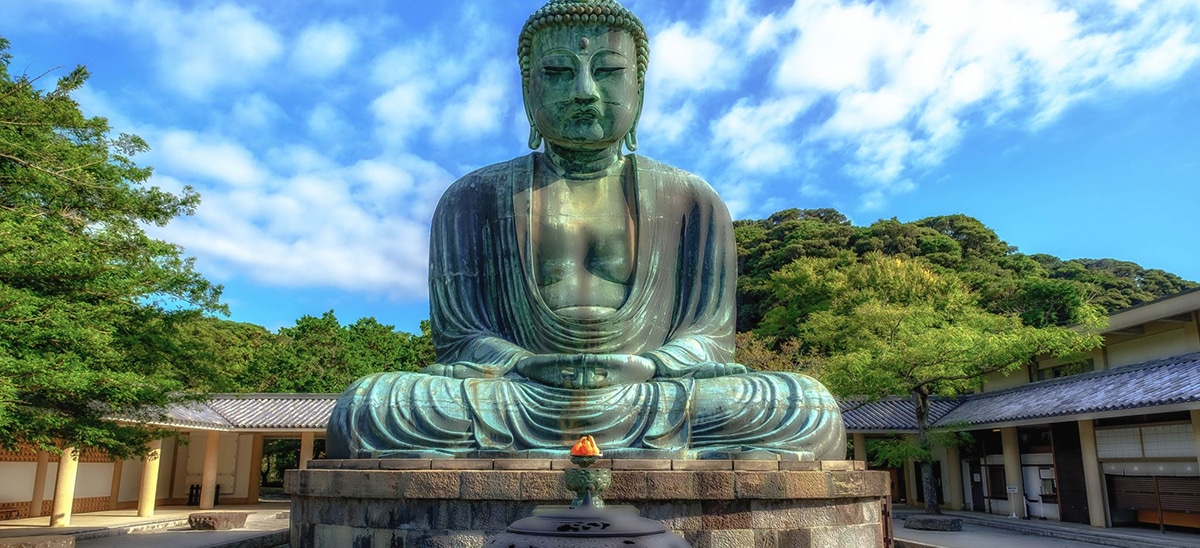
Kamakura is one of the typical excursions that can be done from Tokyo, Japan's capital. If the world weren't going through this pandemic, 2020 would have been Japan's peak tourism year, with the Olympics and all, so it's a very visited country.
There are many easy excursions to do from Tokyo and Kamakura is less than an hour south of the city. Super close and highly recommended, because in addition, the famous Kamakura Buddha what do you see in the photo.
Kamakura

It is a coastal city which is an hour southbound from Tokyo. At some point it was the political center of the country, back in the XNUMXth century, a government that lasted an entire century under the control of the Minamoto shogun and the Hojo regents. Later the power passed to the city of Kyoto, when the political successor decided to settle there.
Today is simply a quiet little town with many shrines, historical monuments, and temples. And since it is on the coast, it has beaches that are usually very crowded in summer. How to go to Kamakura?
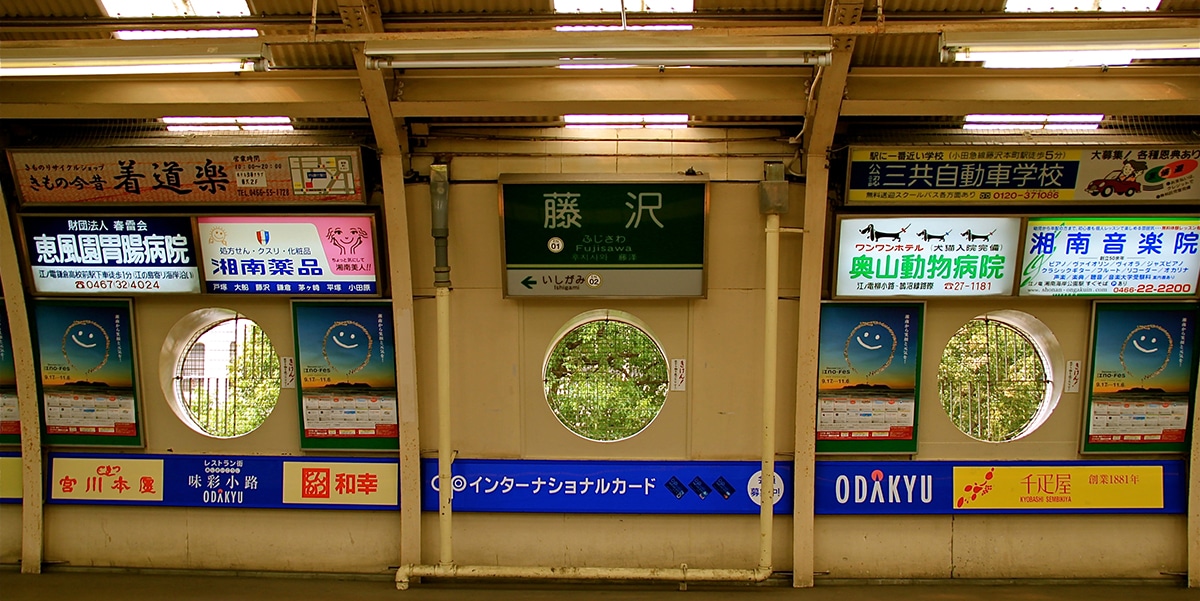
By train there are three options. You can take the Odakyu Line which is the cheapest way. You buy the Enoshima Kamakura Free Pass and that includes the round trip between Shinjuku in Tokyo and Kamakura. In addition, it includes the use of the Enoden, another train but electric, for only 1520 yen. By this means of transport it takes about 90 minutes to arrive, so if you want to take less time you have to use the JR line.
JR has the Shonan Shinjuku Line, which connects Shinjuku and Kamakura in one hour and costs 940 yen. It is advisable to wait for the train to Zushi, which is the one that stops at Kamakura station (two departures per hour), otherwise you have to change at Ofuna station. Another line is the JR Yokosuka Line linking Tokyo station with Kamakura. The trip takes less than an hour and costs 940 yen.
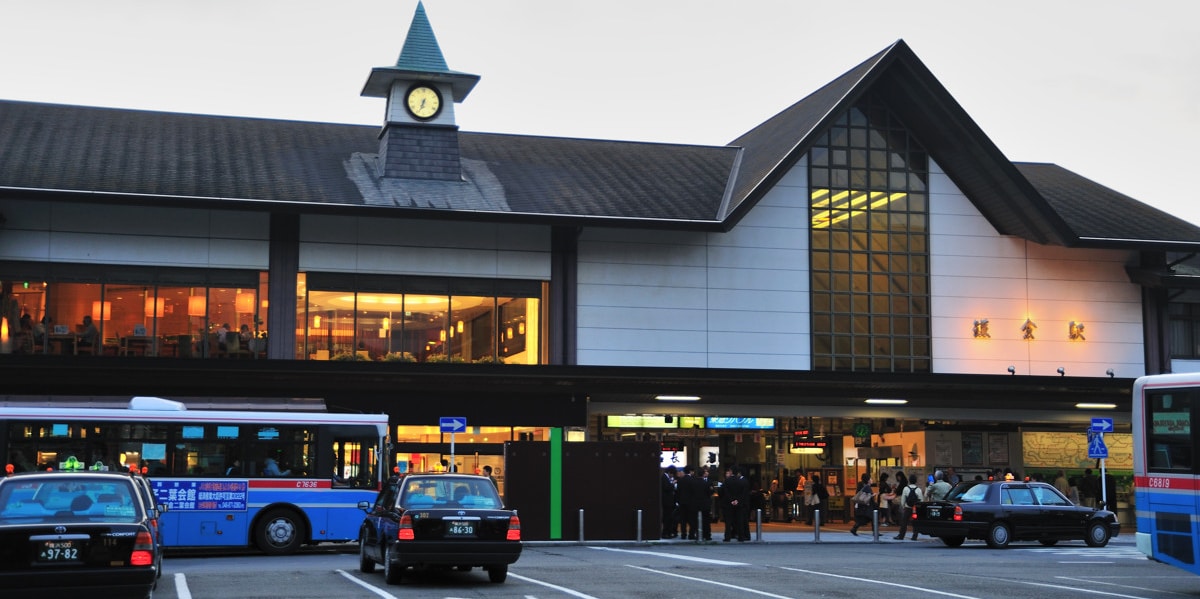
The zone has two passes: the Enoshima Kamakura Free Pass, at 1520 yen, which includes the round trip Shinjuku / Kamakura with use of the Enoden; and the Hakone Kamakura Pass, for 7000 yen), which allows the use of the Enoden and the Odayu line, but also transportation around Hakone on three consecutive days.
What do I visit in Kamakura? The main tourist attractions of Kamakura are distributed in three areas near stations: near Kita Kamakura Station, Kamakura Station and Hase Station. How is a small town really you can move on foot or, for something more picturesque, rent a bike. There are also buses and taxis, if you want to reach more remote areas.
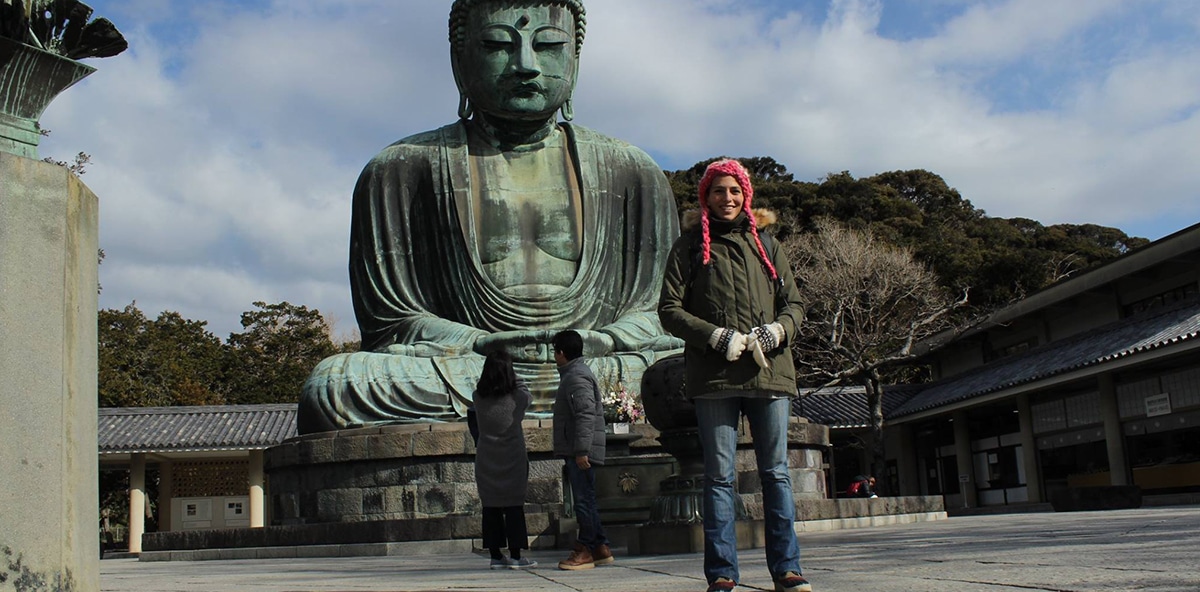
Our first visit is on Kamakura Great Buddha, Kamakura Daibutsu. It is a bronze statue of Amida Buddha that is in the courtyard of the Kotokuin Temple. It stands almost eleven and a half meters tall and is the second tallest bronze Buddha statue in the country. It dates from 1252 and was originally inside the huge main hall of the temple, but the place suffered several typhoons in the XNUMXth and XNUMXth centuries so it was later decided to place it directly outdoors.
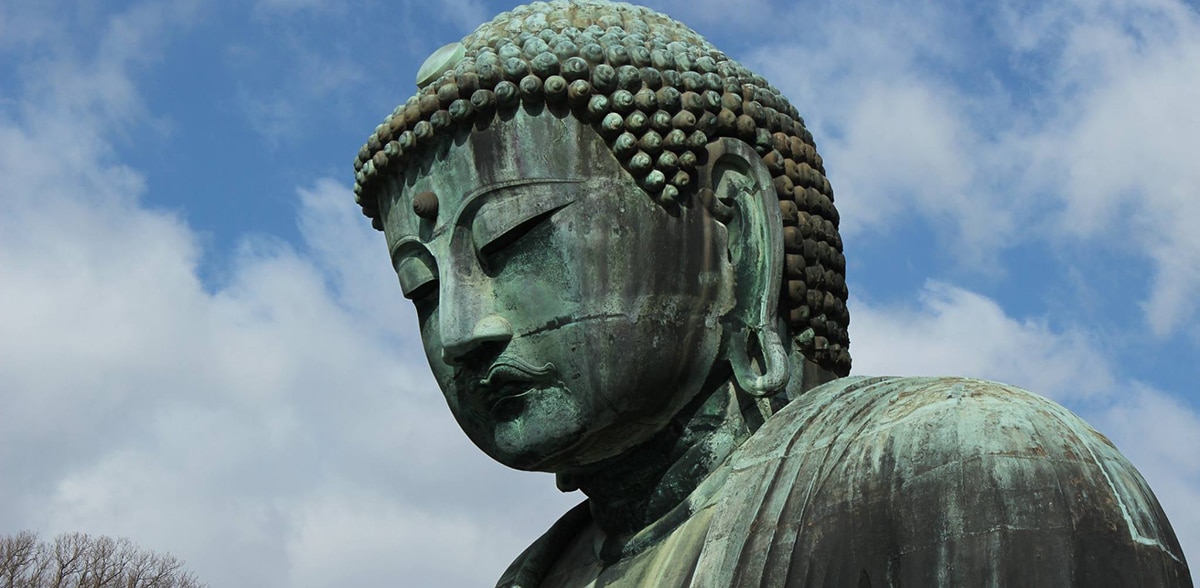
Kamakura's Great Buddha is just a 10-minute walk or less from Hase Station, the third station on the Enoden Line from Kamakura. The Enoden Terminal Station is right next to JR Kamakura Station and this little electric train connects Kamakura with Enoshima and Fujisawa. The Buddha was closed until June due to the coronavirus and today it is open but its hours are reduced: from 8 am to 5 pm. Admission is only 300 yen, just under $ 3.
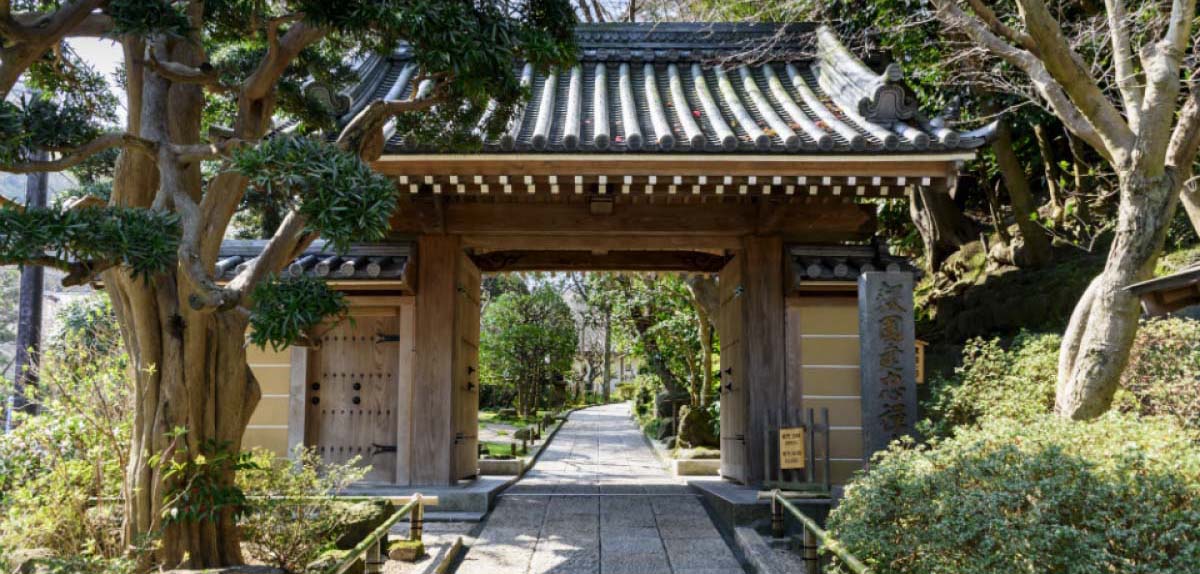
El Hokokuji Temple it is small, beautiful, and somewhat remote. It belongs to the Rinzai sect of Zen Buddhism and was founded in the early Muromachi period, being the family temple of the Ashikaga clan. It appears as we go up the hill, past a portico and a small garden until we reach the main hall that was rebuilt in the early 1923th century after the Great Kanto Earthquake of XNUMX.
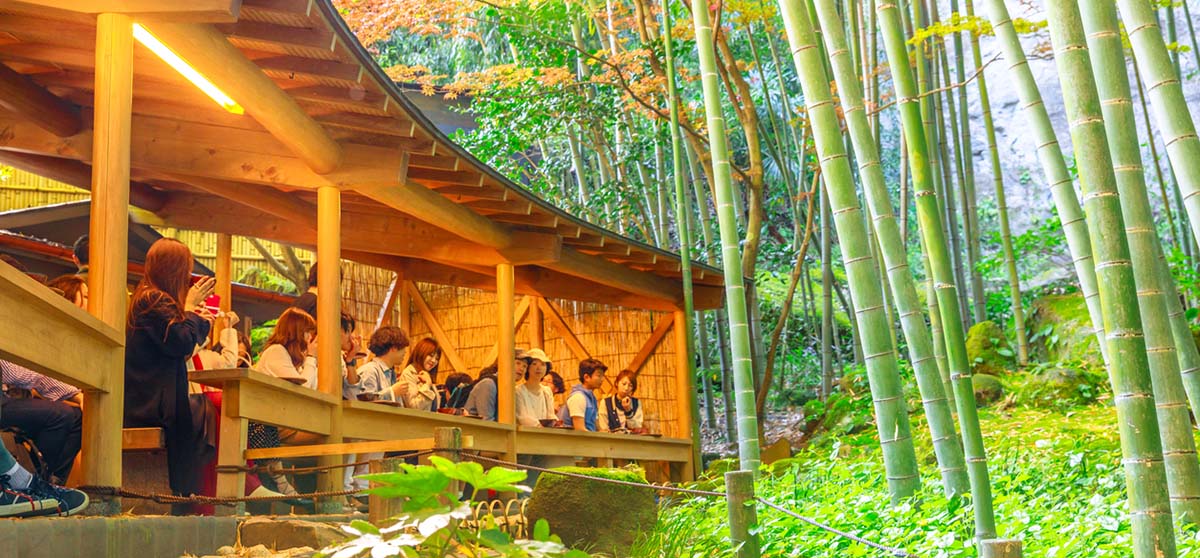
The most valuable statue in the temple is that of Buddha, but there is also a small bell tower and the greatest treasure of all: a beautiful little bamboo garden which is behind the main hall. There are like 2000 bamboo and narrow paths to walk between, a teahouse where to drink matcha tea (green tea), contemplating this beauty. There are also some caves that seem to hold the ashes of some of the Ashikaga clan lords.
How do you get to Hokokuji Temple? Walking from the Jomyoji bus stop (this is taken at Kamakura station, it is 10 minutes at 200 yen). You can take the 23, 24 or 36. If you like to walk, you will arrive on foot in half an hour or a little more from the same train station. The Bamboo Garden opens from 9 am to 4 pm and closes from December 29 to January 3. It costs 300 yen and if you want the tea service you pay 600 yen extra.
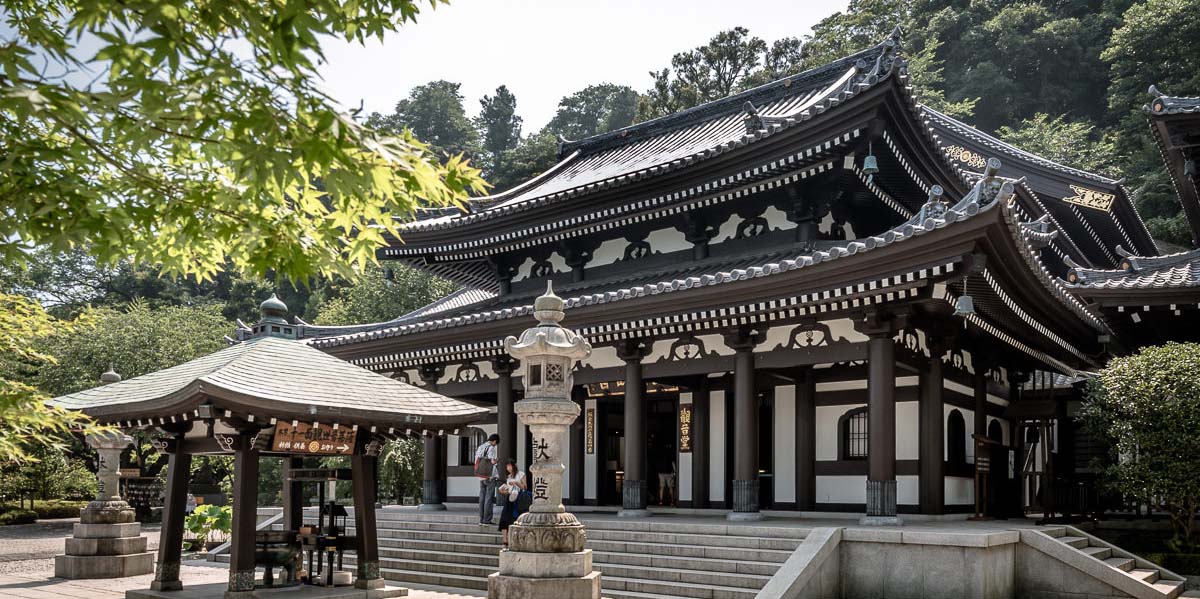
Another temple is the Hase Temple, belonging to the Jodo sect and very famous for its high eleven headed statue of Kannon, the goddess of mercy. The hall is almost ten meters high and the statue is made of gilded wood, one of the largest of its kind in Japan. Legend has it that this wood is the same that was used to carve the statue of Kannon of Nara. The temple has a museum, which pays extra entrance, which keeps more statues, drawings and others. On the other side is the Amida-do Hall with a ten-foot golden statue of Amida Buddha.
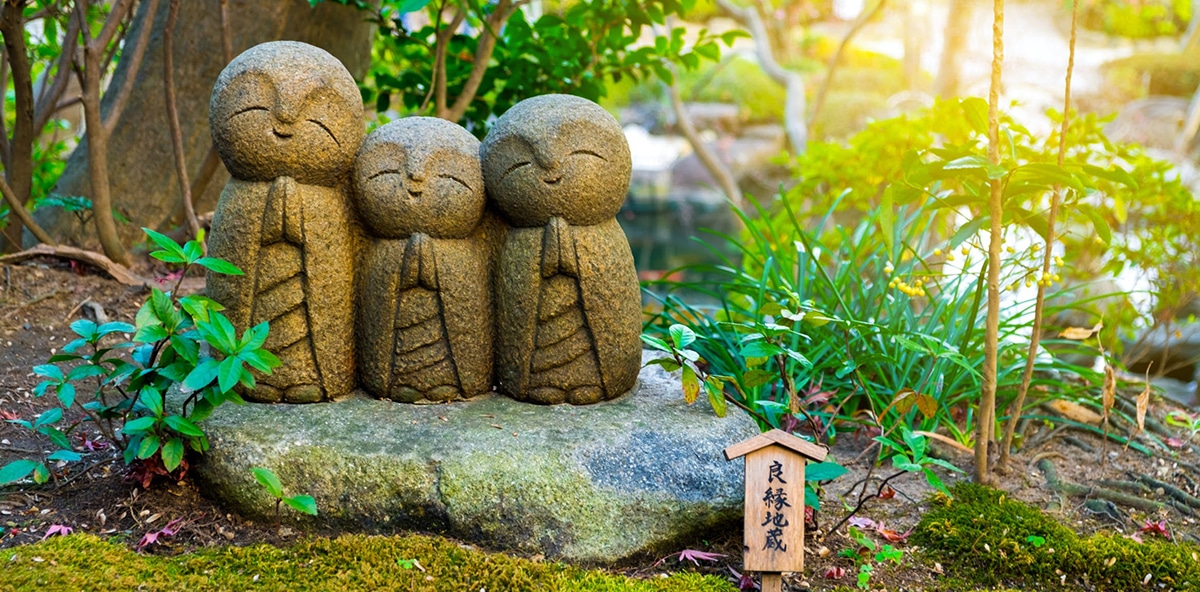
The temple, because it is located on the side of a hill, has a beautiful terrace from where the views of Kamakura city are beautiful. There is also a restaurant to enjoy more quietly and you will see, next to the stairs that go up and down the slope, hundreds of small statues of Jizo Bodhisattva, who helps the souls of children to reach paradise.
Right at the base of the slope is the entrance to the temple, with gardens and ponds. Hasedera is only five minutes from Hase Station. It opens from 8 a.m. to 5:30 p.m. and until 5 a.m. between October and February. It does not close any day and the entrance costs 400 yen.
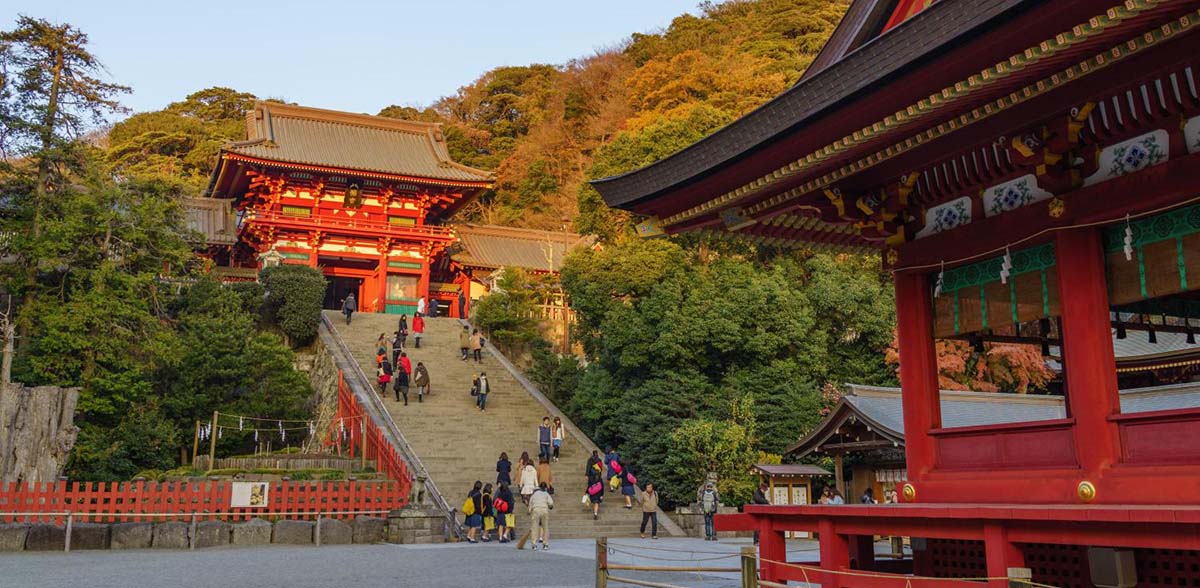
The most important temple in Kamakura is the Tsurugaoka Hachimangu. It was founded in 1603 and is dedicated to Hachiman, the patron god of the Minamoto family and samurai in general. The temple is accessed by a long path that runs from the Kamakura boardwalk, crossing the entire city and crossing under several toris. The main room is on a terrace at the top of a staircase. Inside there is a museum with swords, documents, masks ...
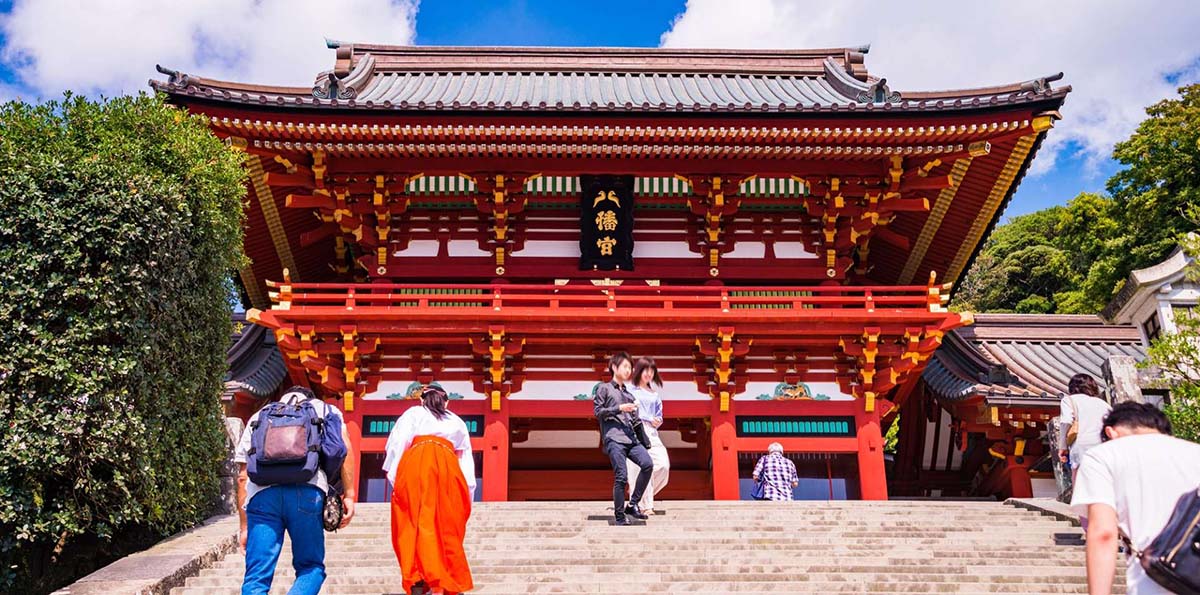
To the right of the staircase, until 2010, there was a ginko tree that at one point served as a hiding place to attack the shogun. Ancient, beautifully golden in fall, it did not survive a windstorm in March 2010 and died.
At the base of the steps there is a stage where there are usually music and dance shows and you can see another sanctuary and ancillary buildings around there. You can also get to this temple from Kamakura Station, either by bus or on foot. Admission is free.
We cannot describe the number of temples that Kamakura has but we can name them: Kenchoji, Zeniarai, Engakuji, Meigetsuin, Ankokuronji, Jomyoji, Zuisenji, Myohonji, Jochiji, Tokeiji and Jufukuji. They are all beautiful but it is true that you cannot spend it seeing temples, the third time they are all the same. What we do recommend is visit Enoshima and its beaches and do some hiking.
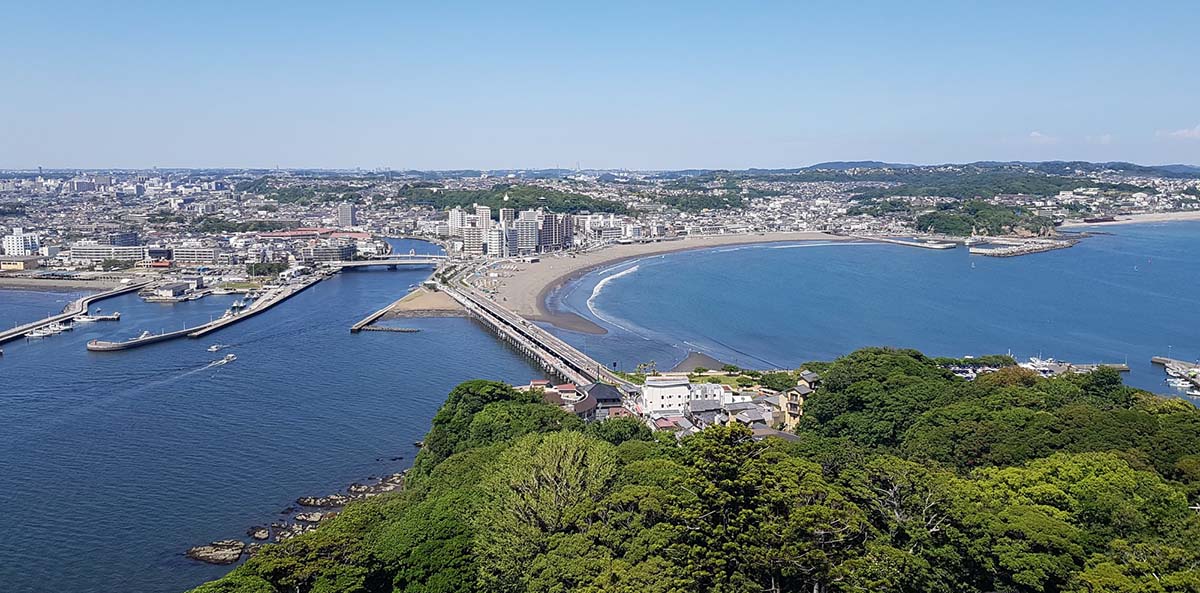
Enoshima is a small island near Tokyo which is connected to the coast by a bridge that you cross on foot. The island has a sanctuary, an observation tower, caves and gardens. The wooded hill can be explored on foot and you will see many shrines dedicated to Benten, the goddess of good fortune, health and music.
There is also an aquarium and the beaches are great, with warm, calm waters and crabbing! From Kamakura the Enoden takes 25 minutes, from Shinjuku you can also get there and the same from Tokyo station.

Finally, If you like hiking in Kamakura there are three routes: the Daibutsu Tour, the Tenen Tour and the Gionyama Tour, today closed due to last year's typhoon. If you go next year, try to check which ones are open. They are fabulous, green routes that cross the hills connecting temples and shrines. In general, they do not last more than half an hour to 90 minutes, but they are not paved so watch out for shoes and rain.